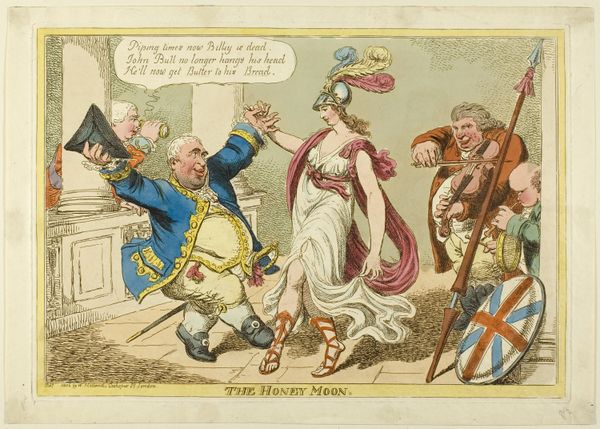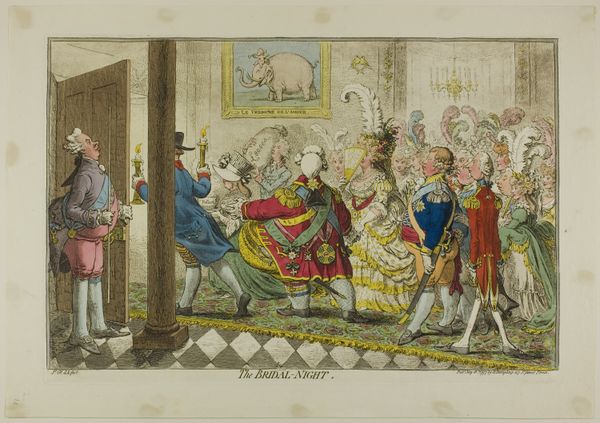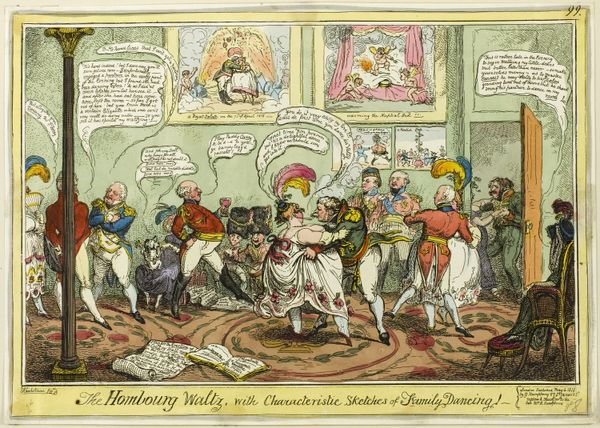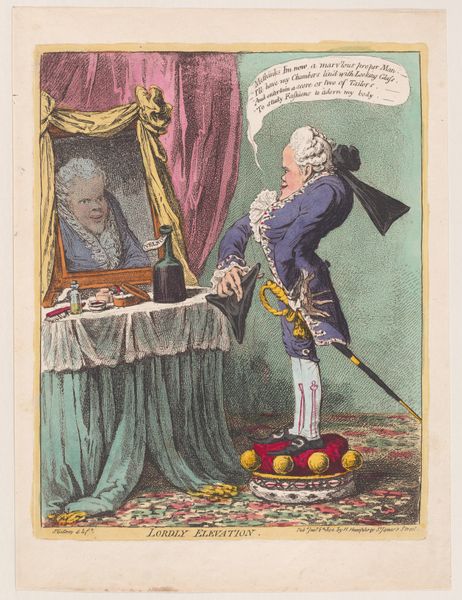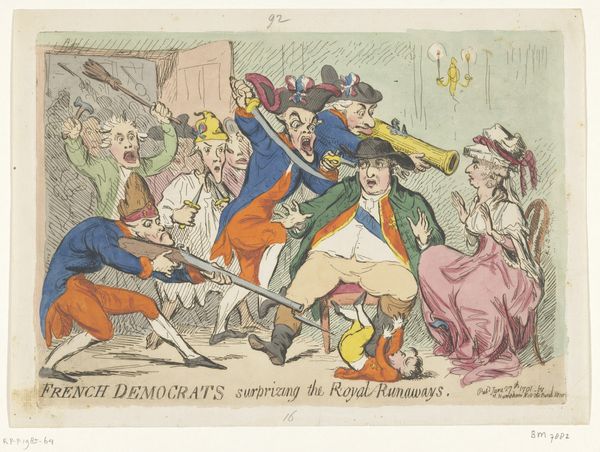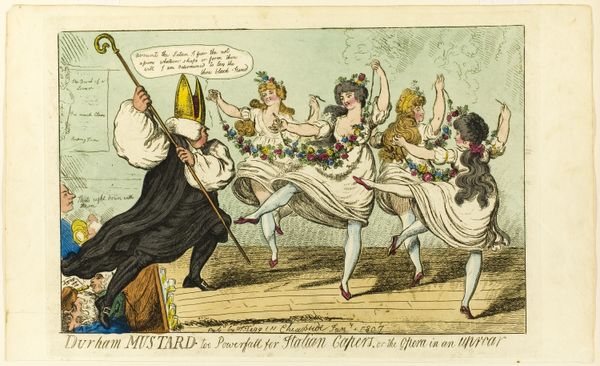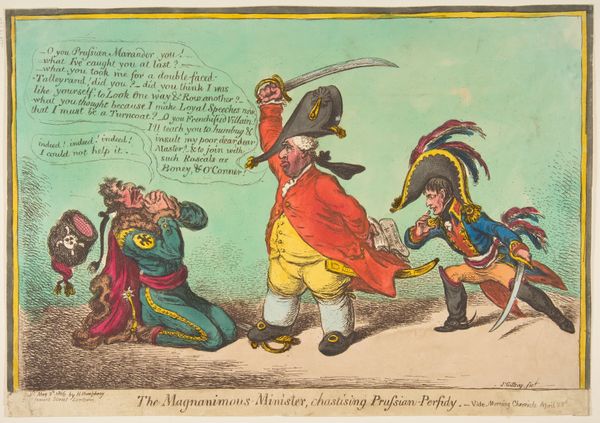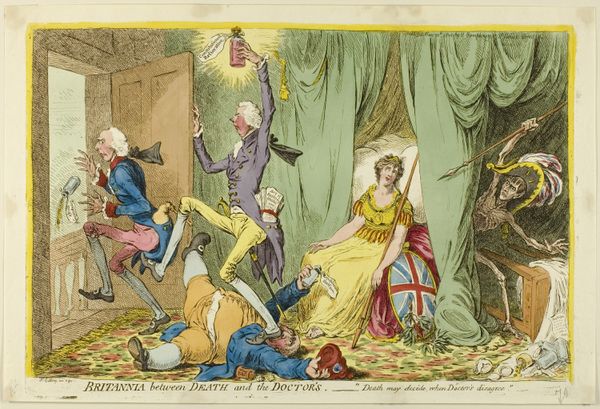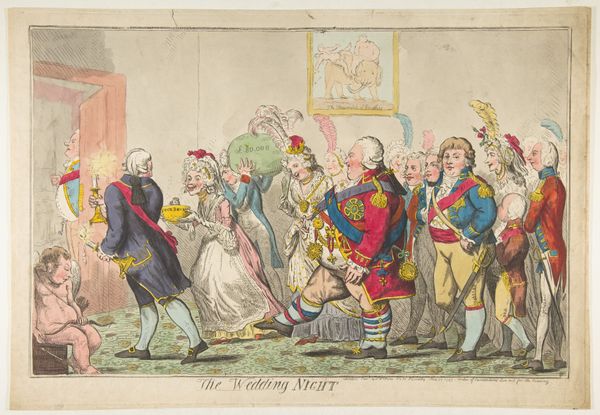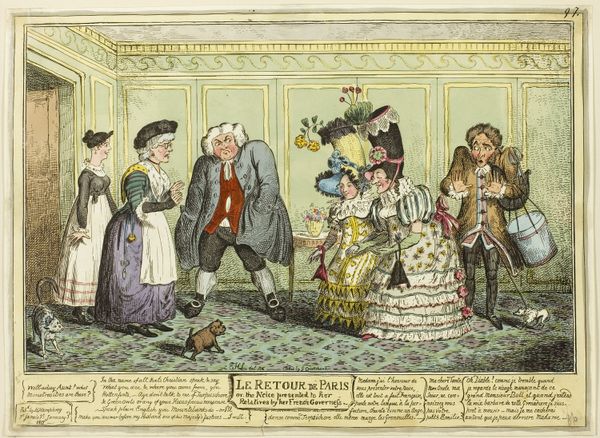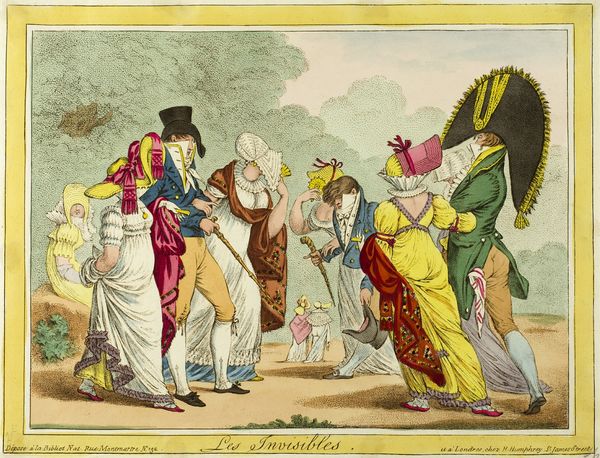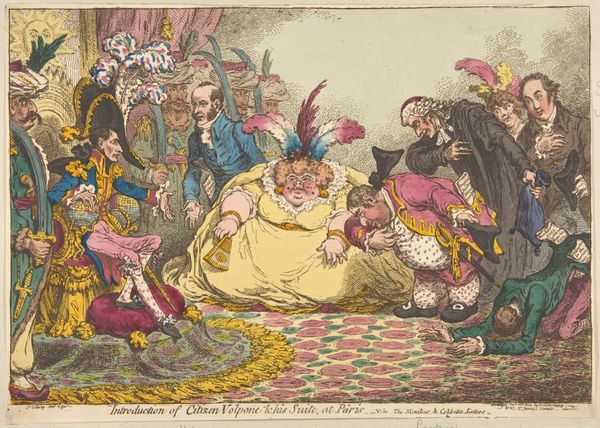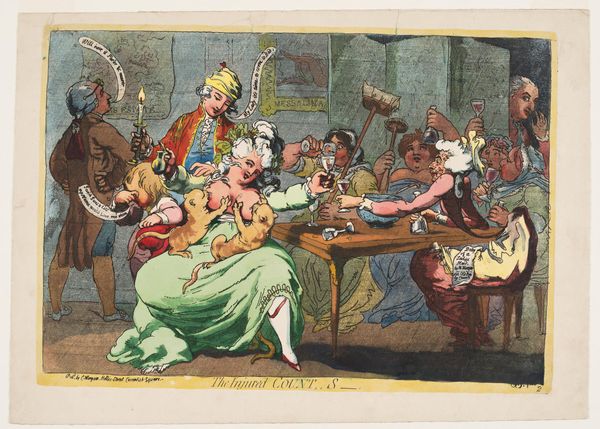
drawing, print, etching
#
drawing
# print
#
etching
#
caricature
#
genre-painting
Dimensions: sheet: 10 3/16 x 16 1/4 in. (25.9 x 41.2 cm)
Copyright: Public Domain
Curator: Look at this biting satire titled "Pizzaro a New Play or the Drury-Lane Masquerade," an etching and print dating back to 1799 and held in the collection of the Metropolitan Museum. It really captures a moment of intense political and social critique. Editor: My initial reaction is the visual cacophony—it’s almost overwhelming with detail, and the exaggerated figures feel particularly sharp, like visual daggers pointed at someone, somewhere. The colors are subdued but intentionally pointed. Who do you think is in the artist's crosshairs here? Curator: It's multi-layered. At the surface, it satirizes Richard Brinsley Sheridan’s play "Pizarro," but beyond that, it critiques the political climate surrounding the play’s production and reception. We're talking about a moment in England heavily influenced by fears of Jacobinism, with suspicion cast on anyone deemed disloyal. The print connects the play's themes to the royal family. Editor: So the play itself became a kind of stage for anxieties around loyalty and political allegiance. And you see that anxiety reflected in the figures around the edge, looking towards the main stage of performers and the supposed performers in the play, the royalty? Curator: Precisely. Notice the figure on the left, assumed to be Sheridan himself, holding the candle and proclaiming to stay by him. In contrast, notice how caricatured King George III and Queen Charlotte are. They are on display being adored by some but clearly marked as players in this theater of political maneuvering, which then reflects the anxiety between perceived Jacobins and perceived loyalists, echoing deep gendered ideas and biases of the time period in British history. Editor: It’s fascinating how a theatrical production becomes a lens through which we can examine broader societal anxieties and power dynamics, even to our contemporary understandings. The artist's message is that the stage—both literally and figuratively—is never a neutral space. Curator: Exactly. Looking at this print offers insights into how art can operate as both a reflection of and intervention within the political sphere, pushing its viewers to consider which characters we ourselves embody. Editor: I think that’s key for us—to continue examining the contemporary politics of the image and how they may speak across centuries, and perhaps even inform how institutions reproduce ideas about royalty and authority in artwork today.
Comments
No comments
Be the first to comment and join the conversation on the ultimate creative platform.
